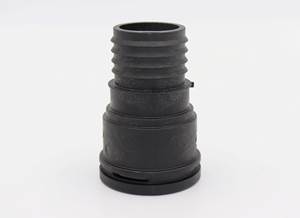Handheld Scanner Improves Quality of Complex Castings for LED Fixtures
Handheld scanner is a portable scanning device, which is capable of capturing 3D geometry.
Share
Lighting Science® uses the HandHeld laser scanner from NVision to ensure the dimensional integrity of the extremely complicated castings it purchases and uses in its roadway light emitting diode (LED) fixtures. In the past, it was difficult to inspect the castings because their geometry was too complex for gauges and blocks and they would have taken a long time to program and inspect on a coordinate measuring machine (CMM). “With the NVision HandHeld laser scanner we can, in about two hours, obtain the complete 3D geometry of a casting and compare it to the design intent to determine not only if the part meets the design intent but also whether it is trending in the correct direction,” said Richard Williams, Manager, Product Quality Assurance for Lighting Science.
Lighting Science designs, develops, manufactures and markets LED lighting solutions that are environmentally friendly and more energy efficient than traditional lighting products. The company uses the HandHeld scanner to evaluate many of its LED solid state lighting components. The company’s new RoadMaster™ street light is one example of the component parts evaluated with the scanner. The RoadMaster provides a reduction in energy costs during its extended operating life, helping municipalities and communities avoid soaring energy and maintenance costs associated with traditional high pressure sodium (HPS) street lights. The RoadMaster pays for itself by avoiding just one HPS lamp replacement, let alone the 4-6 traditional street light changes it is expected to avoid over its rated life.
The Roadmaster fixtures are built around large 2 feet long by 1 foot wide aluminum die castings. The aluminum has a tendency to scavenge the steel dies so over time the features of the castings gradually move out of tolerance. The steel dies used to make the castings typically last from 25,000 to 50,000 shots. It’s critical to inspect a sample of parts received from suppliers to ensure that they are within specifications. But the geometry of the parts is so complex that it would take several days to inspect them with gauges and blocks. As for using a CMM, it would take an estimated week to write a program to inspect each of the many variants of these parts and about 4 hours to inspect each part because of the large number of points that need to be touched one at a time to validate the 3D geometry.
“We heard about the NVision HandHeld scanners’ ability to quickly capture the complete geometry of a complex part and thought it would be perfect for this application,” Williams said. “It takes the operator about one hour to scan the casting and generate a point cloud that completely defines its geometry. Then it takes another hour or so to convert the point cloud to a surface model and compare it to the design intent. Then we use NVision software to compare the as-built part to the design intent. The software highlights in green those areas of the part that are well within tolerance, in yellow the areas that are on the high side of tolerance, and in red any areas that are out of tolerance. This information provides an early warning when we are moving towards the edge of the spec so we can make corrections and avoid the need for scrapping parts.”
The HandHeld scanner is a revolutionary portable scanning device which is capable of capturing 3D geometry. The scanner is attached to a mechanical arm that moves about the object, freeing the user to capture data rapidly and with a high degree of resolution. An optional tripod provides complete portability in the field. Intuitive software allows full model editing, polygon reduction, and data output to all standard 3D packages. NVision software allows you to compare the scan data of your parts against your CAD model. Comprehensive inspection reports including color deviation plots, GD&T, 2D dimensions, flush and gap, animations or application-specific dimensions such as turbine blade measurements are available as output.
Related Content
What is Scientific Maintenance? Part 2
Part two of this three-part series explains specific data that toolrooms must collect, analyze and use to truly advance to a scientific maintenance culture where you can measure real data and drive decisions.
Read MoreHow to Harness 3D Scanning for Mold Tool Repairs
3D scanning supports the repair of molds with no history, drawings or design files.
Read MorePredictive Manufacturing Moves Mold Builder into Advanced Medical Component Manufacturing
From a hot rod hobby, medical molds and shop performance to technology extremes, key relationships and a growth strategy, it’s obvious details matter at Eden Tool.
Read MoreIt Starts With the Part: A Plastic Part Checklist Ensures Good Mold Design
All successful mold build projects start with examining the part to be molded to ensure it is moldable and will meet the customers' production objectives.
Read MoreRead Next
How to Use Continuing Education to Remain Competitive in Moldmaking
Continued training helps moldmakers make tooling decisions and properly use the latest cutting tool to efficiently machine high-quality molds.
Read MoreAre You a Moldmaker Considering 3D Printing? Consider the 3D Printing Workshop at NPE2024
Presentations will cover 3D printing for mold tooling, material innovation, product development, bridge production and full-scale, high-volume additive manufacturing.
Read MoreHow to Use Strategic Planning Tools, Data to Manage the Human Side of Business
Q&A with Marion Wells, MMT EAB member and founder of Human Asset Management.
Read More










.jpg;maxWidth=300;quality=90)







